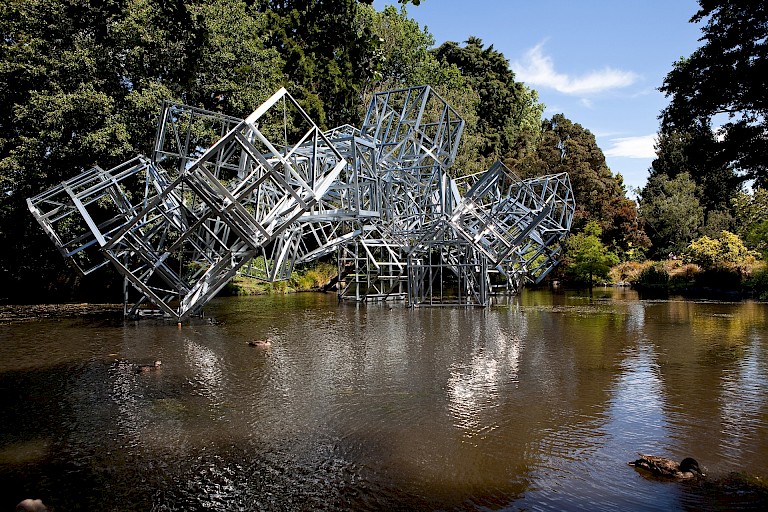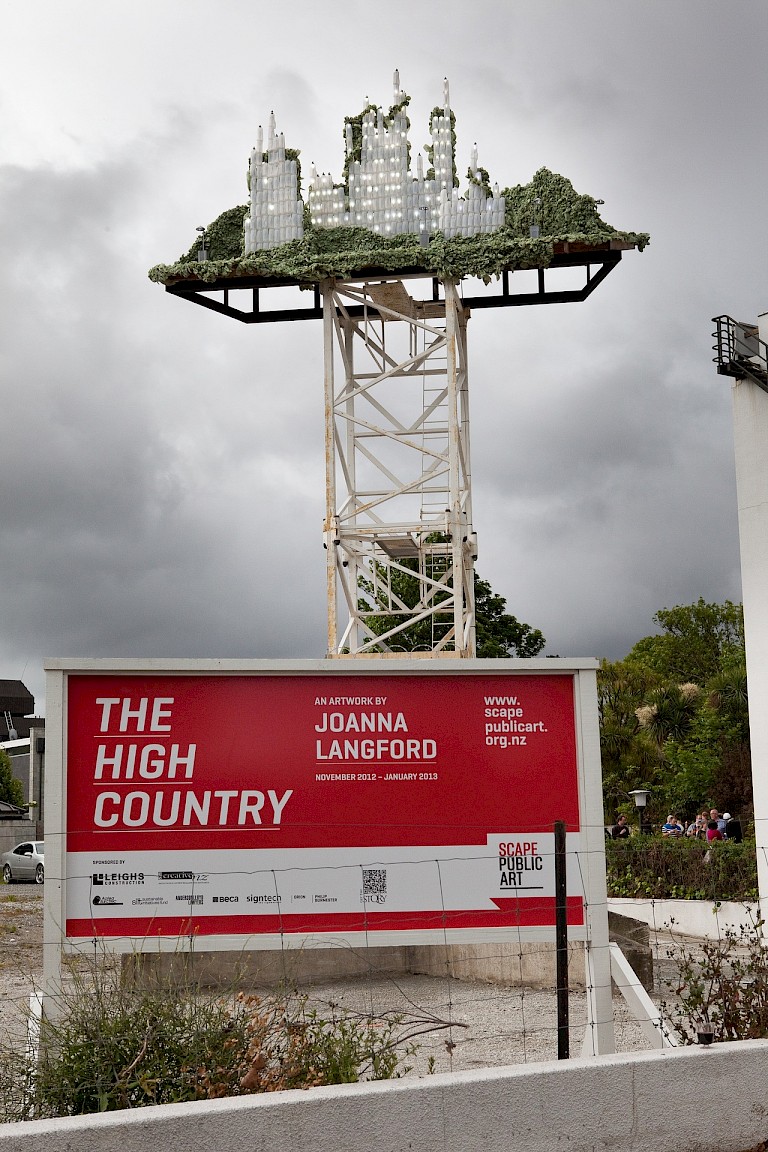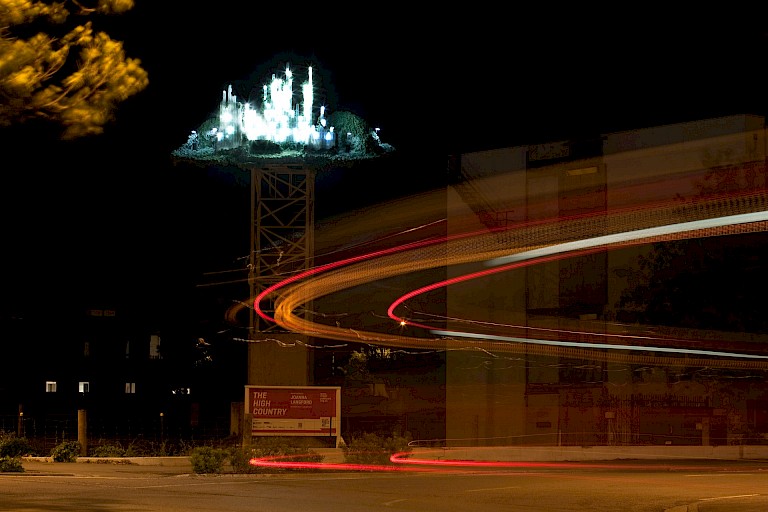



Passing Time by Parsons was perhaps the most traditional work: a sculpture in the round made up of numbered blocks indexing the years 1906-2010 inclusive. 1906 was the year in which Christchurch Polytechnic Institute of Technology (CPIT) was founded; CPIT was a major supporter of the commission. 2010 was the year that SCAPE 6 should have launched.
Waiting for a Bus by Turkish artist Ahmet Ogut had a more interactive’ dimension and was especially well received by audiences. It consisted of a carousel of bus shelters adorned with colored lights. Passersby could sit in the shelters and contemplate the installation site (outside the Canterbury museum) from within the revolving carousel.
Gardensity by Keating could be considered a relational work, insofar as its object was to stimulate and maintain “an interactive online dialogue about the future of inner-city living in Christchurch.” Gardensity involved a purpose built website and forum (no longer active) as well as an architectural animation (an imaginary future Christchurch) to host and provoke discussion. In the context of a city whose central district is still largely under construction three years after the 2011 quake, this work seemed particularly relevant, although the extent to which consequential conversations took place remains unclear.
Muegano by Mexican artist Hector Zamora was another sculpture in the round, standing seven meters high and 20 meters long above the Kiosk Lake in the Christchurch Botanic Gardens. Made of 26 galvanized steel greenhouse frames, it invited reflection on traditional house formats and geometries. Given the extreme axes along which the 26 greenhouse frames were arranged, Muegano also expressed something of the quake-induced chaos of its host city (the literal upending and destruction of commercial and residential buildings).
There is not the scope to discuss all the projects in SCAPE 6, but the examples above are intended to provide a sense of the curatorial program as a whole. It is possible that the imagination and activity on the part of commissioned artists realizing their works in public spaces contributed to building community resilience after a collective trauma, since these cultural activities demonstrated solidarity with the affected population. It is also likely that many of the works provided, at least to some audiences, a kind of existential respite from the stresses of life in a city under construction. SCAPE 6 is commendable for successfully realizing a coherent program of public art commissions in the face of two setbacks and highly adverse circumstances. The extensive media coverage of the biennial, largely positive, attests to its local and national significance.
All copyright belongs to Shanghai Academy of Fine Arts, Shanghai University.



